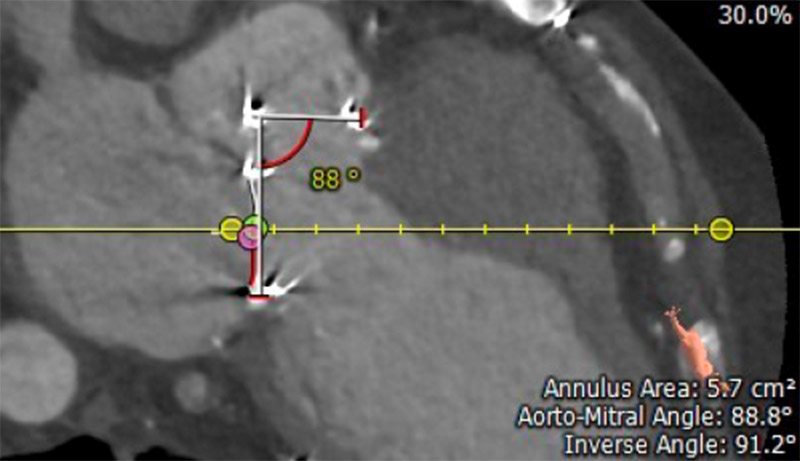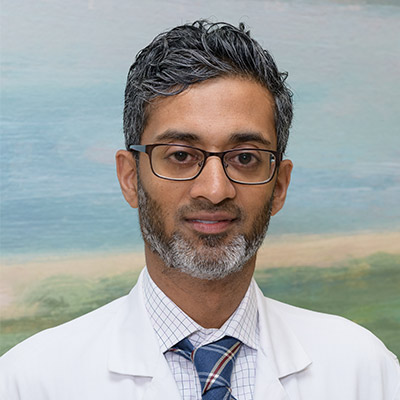Cardiothoracic surgeons at NewYork-Presbyterian/
“Patients do not want reoperations. They don’t want to have multiple, big procedures if they can get a transcatheter therapy,” says Isaac George, MD, Surgical Director for the Structural Heart and Valve Center at NewYork-Presbyterian/
Dr. George and colleagues at the Structural Heart and Valve Center recently published two separate studies that outline their experience in complex cardiac procedures and transcatheter therapies. One study, published in the European Journal of Cardio-Thoracic Surgery, explores the anatomic considerations after Commando double-valve reconstruction and the implications for future valve-in-valve therapies. The other, published in Catheterization & Cardiovascular Interventions, offers procedural insights from the center’s experience with transcatheter aortic valve-in-valve implantation within stentless landing zones.
Commando Double Valve Reconstruction
The Commando operation is typically used in patients with endocarditis or infiltrative calcification that has created extensive damage to the anatomy, particularly the fibrous connection between the aortic and mitral valves. During the procedure, surgeons perform a double valve replacement and reconstruct the aortomitral curtain that connects the valves.
The aortomitral curtain is repaired using a bovine patch that is attached to the left atrium, the left ventricular outflow tract, and the aortic root. However, the length of the patch can alter the angle between the newly replaced aortic and mitral valves, which has implications for whether future valve replacements can be done using a transcatheter valve-in-valve approach.
In the study, Dr. George and his colleagues reported anatomic measurements from seven patients who underwent double valve surgery using the Commando reconstruction technique from January 2018 to April 2022 and had postoperative computed tomography (CT) scans. The team used special software to make several anatomical measurements and to perform virtual transcatheter valve replacement.

3-D CTA reconstruction of a post-Commando patient, demonstrating the aortomitral angle measurement.
They found that the aortomitral patch length was inversely proportional to the aortomitral angle, with the optimal range between 0.5 cm and 1 cm in length to allow for low coronary obstruction risk and easy re-access. If the patch is too short, it could increase stress on the anatomy and can potentially cause tearing in the valve leaflets, while a patch that is too long can fold in on itself, making access for a future transcatheter procedure challenging.
The idea for the study stemmed from Dr. George’s own clinical experience when he was trying to understand if his patient would be a good candidate for valve-in-valve surgery after a Commando procedure. Knowing the optimal length for the aortomitral patch during the Commando procedure will allow surgeons to create a favorable anatomical environment for future transcatheter therapy, rather than a more complex reoperation, he says. This is especially important for younger patients who could require tissue valve replacement within 10 to 12 years.
“These are major reoperations that have very high risk, so there’s a huge incentive to get some other therapy that is nonsurgical for this class of patients. Allowing a transcatheter, therapy may extend the life of an existing valve, and delay surgery,” Dr. George says.
These are major reoperations that have very high risk, so there’s a huge incentive to get some other therapy that is nonsurgical for this class of patients. Allowing a transcatheter, therapy may extend the life of an existing valve, and delay surgery.
— Dr. Isaac George
Moving forward, Dr. George says the research team is preparing a consensus statement on the techniques and methods to successfully plan out various complex operations, to enable the future use of transcatheter therapies.
Valve-in-Valve TAVI in Stentless Valves
The use of stentless valves in the surgical treatment of endocarditis, aortic aneurysms, and other cardiac conditions has been growing because of the ability to avoid lifelong anticoagulation and patient-prothesis mismatch. However, stentless valves are not as durable and typically need to be replaced within seven to 15 years. Valve-in-valve transcatheter aortic valve implantation (TAVI) is a less invasive option than a traditional reoperation for high-risk patients whose valves have failed, but it is infrequently performed for stentless valves and is associated with a higher rate of complications.
In their recent study, Dr. George and colleagues sought to compile their center’s experience with valve-in-valve TAVI for stentless valves, looking at 25 consecutive patients who underwent the procedure between December 4, 2013, and February 9, 2023.
The 25 cases of valve-in-valve implantation included:
- 11 patients with a homograft
- 10 patients with a stentless bioprothesis
- 4 patients with a valve-sparing aortic root replacement
All of the procedures were successful and there were no cases of significant paravalvular leak, coronary occlusion, or device embolization. However, 20% of cases required the use of an additional valve, which is indicative of the challenges of working with stentless valves, including the lack of fluoroscopic markers.
“We decided to take a look at our procedures with a view of not necessarily focusing on the clinical outcomes, but creating a document that can help guide other operators in doing these procedures,” Dr. George explains.
We decided to take a look at our procedures with a view of not necessarily focusing on the clinical outcomes, but creating a document that can help guide other operators in doing these procedures.
— Dr. Isaac George
One lesson is the importance of comprehensive imaging to assess risk, including a CT scan. “The CT scan has really changed everything we do in structural heart. It gives us precise anatomic information about the valve and about the surrounding structures,” Dr. George says.
The NewYork-Presbyterian/
Figuring out how to perform valve-in-valve TAVI for stentless valves without high rates of complications is critical, Dr. George explains, because the transcatheter approach can extend the time to another significant surgery by several years.
“These are adjunctive procedures to improve a patient’s quality of life. You can imagine if you come to a young person and say, ‘you’re going to have five operations,’ that doesn't sound palatable,” Dr. George says. “If you come to a young person and say, ‘you’re going to have five procedures, but only two or three operations,’ that becomes a lot more palatable, especially if you've been able to extend the time between any given surgery by five or 10 years.”
Dr. George says these types of investigations would not be possible without the multidisciplinary collaboration at NewYork-Presbyterian/
“It is the culture that we’ve created between cardiology and cardiac surgery, and that’s specific really to the valve center,” Dr. George says. “We have experts from surgery, cardiology, imaging, and even heart failure, and we’ve combined all of these groups into a super subspecialized area where we can understand all of these aspects of the heart. The Department of Surgery is one of the first in the world to embrace this kind of relationship, which can be adversarial in my places. Instead, all of our surgical programs champion a team approach, including valve, heart failure, aortic and others.”




